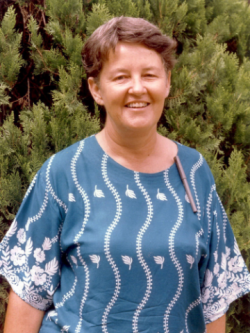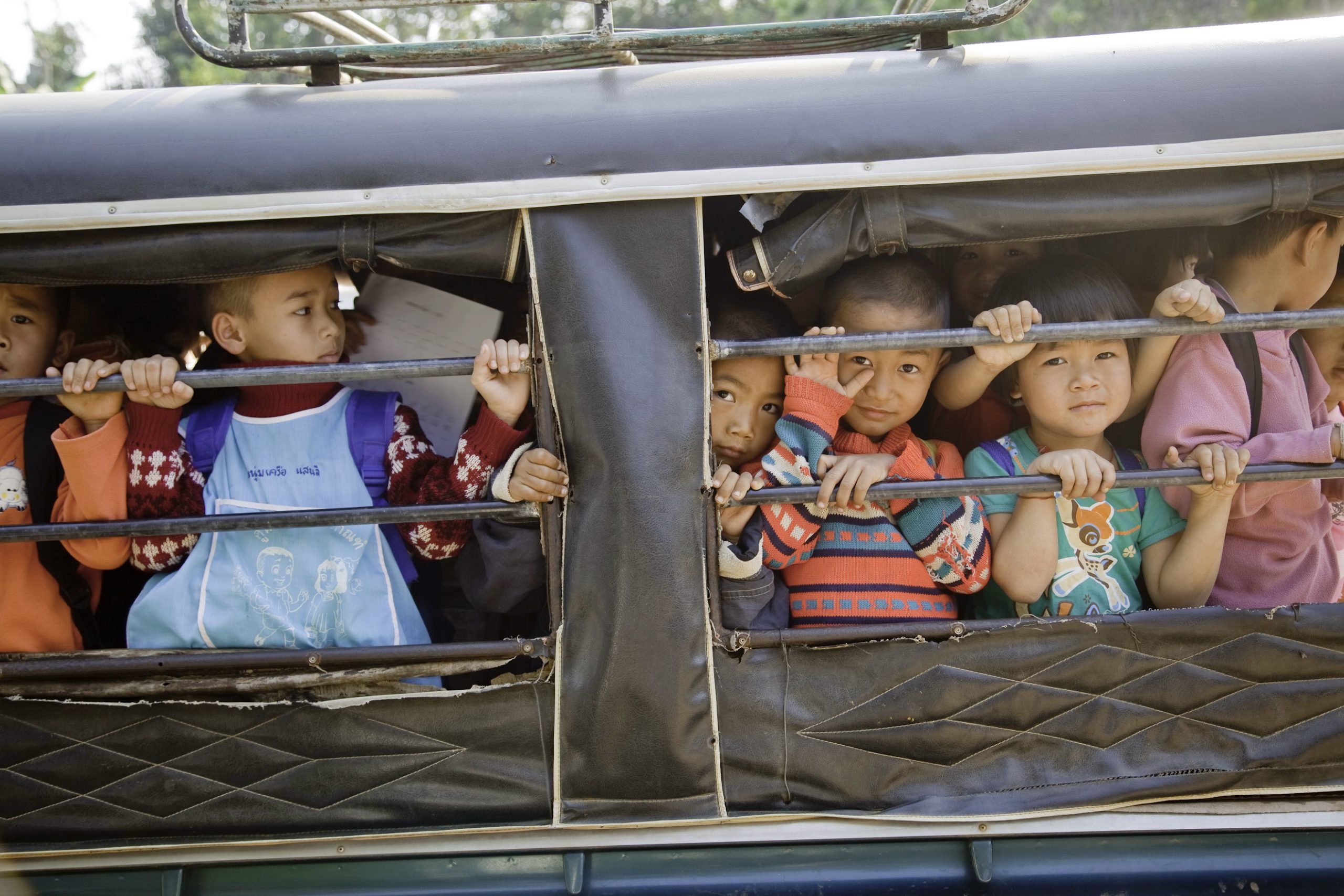A Discussion with Denise Coghlan, RSM, Director, Jesuit Refugee Service Cambodia
02 March 2011

Sister Denise reflects on her 20+ years working in Cambodia and how she is motivated by her faith and a sense of justice. She highlights the challenges facing people with disabilities, of post-conflict reconciliation, and rebuilding trust. She also discusses the legacy of the Khmer Rouge in relation to families and society in Cambodia today. Faith-inspired organizations are an important link between the policy and community levels. Sister Denise stresses that faith-inspired organizations must be experts in their field; faith alone is not always sufficient to make lasting contributions. Finally, she describes her international work on landmines and cluster bombs, which won her team a Nobel Peace prize.
Interview Conducted on May 28, 2010
Can you outline how you came to your present position in Cambodia? What are sources of your personal inspiration?
I joined the Sisters of Mercy in Australia in the 1960s, and from there went to Papua New Guinea, where we established the first high school for women in the northern part of the country. Following my time in Papua New Guinea, I joined the leadership team for the Mercy Sisters in Brisbane. There was a request for a volunteer to go into the refugee service to work in the Thai camps with Cambodian refugees. So, even though I enjoyed my job at the time as coordinator for the Institute of Faith (a program for adult Catholics to refresh their theology and philosophy) in Brisbane, I felt I had to go. When they asked me why I wanted to go to the camps, I said that wherever suffering is present in the world, the cross of Christ is mysteriously present. That was my motivation. It was difficult for many interviewers to hear this, I think, because they thought I should say that I wanted to return to help refugees in Australia, but in reality it did not have anything to do with that. It really was about following the cross of Christ.
In the refugee camps, I found myself confronted with an ethical dilemma. We were at the service of one particular faction of the Cambodian people (the people in the camps), and there were four factions in the country still at war. The bombs and the shells were still falling into the camps while I was working there. We had a major discernment to carry through: we had to ask ourselves, “Does staying in the camps prolong the war? What will be the outcome if we do stay?” The question we had to ask ourselves was, “shall we stay in the camps, yes or no?”
In the end, even though there was mixed opinion, we decided to take three different tracks: some people would remain with the refugees in the camps until they were finally repatriated, another group would work outside, with Buddhist monks, on advocacy and reconciliation, and a small pioneering team would work inside Cambodia with Cambodians who were in the country. I was one of the four chosen to be the pioneer of the Jesuits in Cambodia. Of course, the Jesuits first came to Cambodia in about 1540, soon after the Order was founded, but then they only stayed for a very short time.
So that is how I got here.
We (myself and the fellow Jesuits I was working with) became the Jesuit Refugee Service. But in order to work in the country in those days, you had to strike an agreement with the local authorities. The authorities knew of our work with people with disabilities in the camps, and they asked us if we could implement vocational training for people with disabilities. We said that we did not want to be limited to work in a certain sector, but rather sought to be integrated into a rural community (or as rural a community you could work in at that time because of security). We thus had three strands to our work: 1) to work with people with disabilities as a symbol of the results or war, conflict, and exile. 2) to build a rural development project for the poor in the villages, and 3) to work for peace and reconciliation.
The center where we began our work carries much important symbolism. It had previously held many functions, including a base from which carrier pigeons were sent out during the war. The actual name for the center in Cambodian was Banteay Prieb, meaning Center of the Dove. It was amazing for us to have an invitation to work for peace, in the center of peace. However, the center had also been a killing field during Pol Pot’s rule. We dug up many skeletons and bones. It was also a prison during the early years of the Hun Sen regime. Now, through our work, it is a place where people start to flourish into life again.
We tried to work on and introduce the theme of peace and reconciliation through all of our projects. At the Center of the Dove, we brought together people from all four of the different factions of the Cambodian conflict, to train them and then have them serve as teachers to others in society. For instance, in one case former enemies had come together in our vocational training workshop. In our sculpture class, one man who was teaching looked down at one of his students and said, “You were probably the one that put down the mine that blew off my right leg.” This small example shows how reconciliation was at work in the Center.
Later on, starting from our time in the refugee camps (because of the horrific cases that we saw), we became very interested in the campaign to ban landmines. The Cambodia anti-landmine movement has been very influential in the international campaign to ban landmines. It began with a letter from four soldiers in the Center of the Dove. The letter said, “Before we were soldiers that laid the mines that blew off the arms, legs, and eyes of one another; now, we work together in the Center of the Dove and we beg the world to stop making mines, stop laying mines, begin clearing mines, and to work so that our communities and people with disabilities can live a full life once again.” One of these former soldiers then went to the Pope and asked him if he would stand by the ban on landmines, which he did. In 1997, this same individual rode his wheelchair onto the stage in Oslo and received the Nobel Peace Prize on behalf of the campaign. He is working with me in Siam Reap, continuing his crusade against landmines. We have the Nobel Prize on display in our office.
Through these stories and my experience over the years, I have witnessed the resilience, hope, and courage of the Cambodian people, who have suffered so much, yet they can still be happy and still go on with their lives?.
What do you see as the legacy of the Khmer Rouge for Cambodian society today, and how is that reflected in the work that you are doing?
When I was in the camps for 2.5 years, almost everyone had lost someone from their family, so there was an incredible sadness about what had happened. One friend of mine, who now works for us, upon her arrival at the refugee camp had found that her former husband was married to her sister, exemplifying family betrayal and an example of a horrible trauma that the people had to endure. Other friends had just started their first year in university when the turmoil began, and then they had to leave and run. What I have seen for these women, particularly, is that their whole inspiration and ambition was thwarted. They had lived through incredible starvation and uprootment, and many had missed their chance to marry as well. That is why there are many single women from that era who are extremely talented, yet have not yet fully reconciled with the past. Depression is a major challenge facing these women today.
Another legacy is that during the Khmer Rouge period, in order to survive you had to steal and tell on others. There still remains today an incredible la


